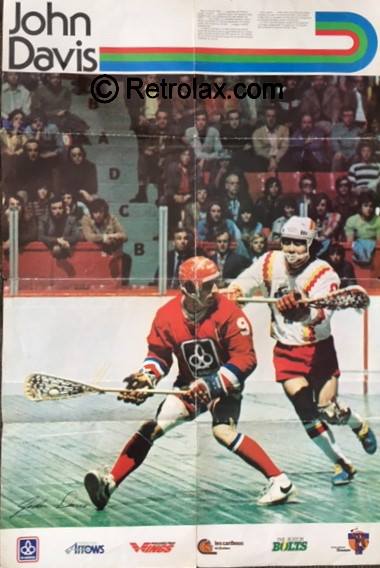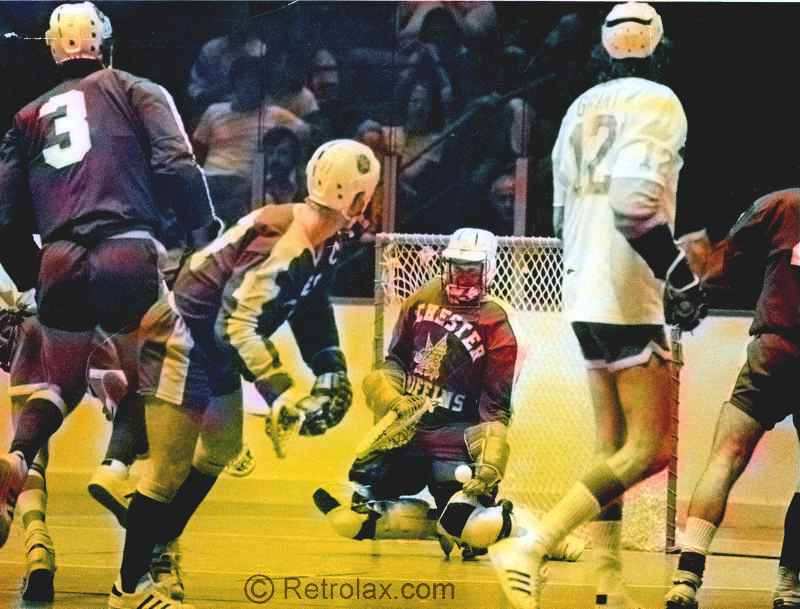By DAVE BLEZOW-Daily Record-Jan.13,1987
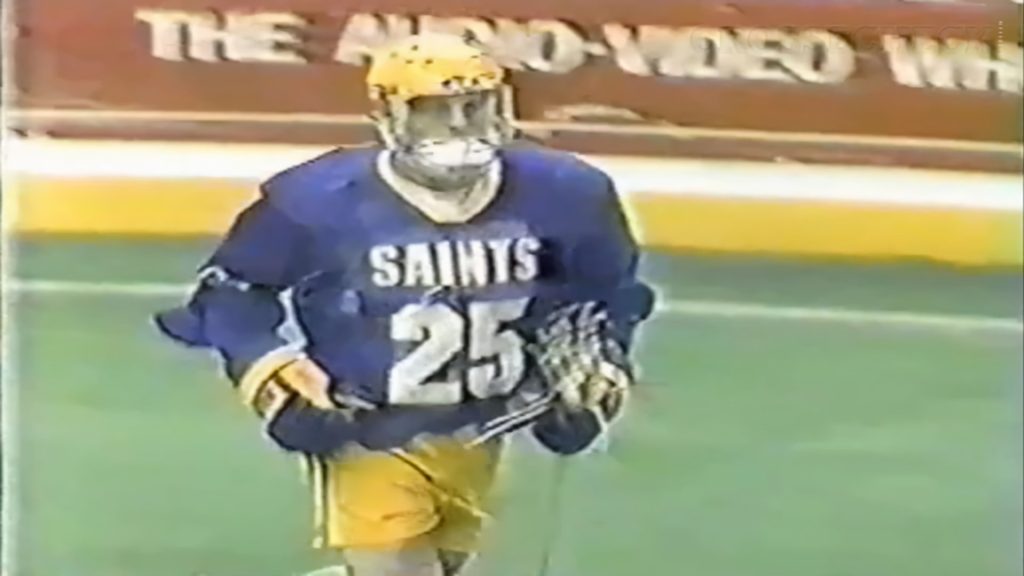
EAST RUTHERFORD – The reasons to be doubtful were many and the pre-game ticket sales were few, but by 10:30 last Saturday night, nearly 6,000 paying fans at the Meadowlands Arena cheered wildly, in salute of the New Jersey Saints and the new Eagle Professional Box Lacrosse League.
That the hometown Saints won their inaugural battle with Philadelphia Wings, 11-8, was of little importance. Rather, it seemed fans were reveling in their discovery of this hew, hard-hitting sport. “I have no idea what the rules are,” said fan Paul Adler of Little Falls, “but it sure is great to watch. It really is fascinating. It’s fast and it’s exciting. Another thing I like is that so many of the players are local, not like the indoor soccer where most of them were foreign.
“I just wish they’d explain some of the rules.”
Adler was not alone in his bewilderment as some brutal hits were called penalties, while most collisions were deemed legal by the referees. One player also commented that “the rule book was thrown out for this one.”
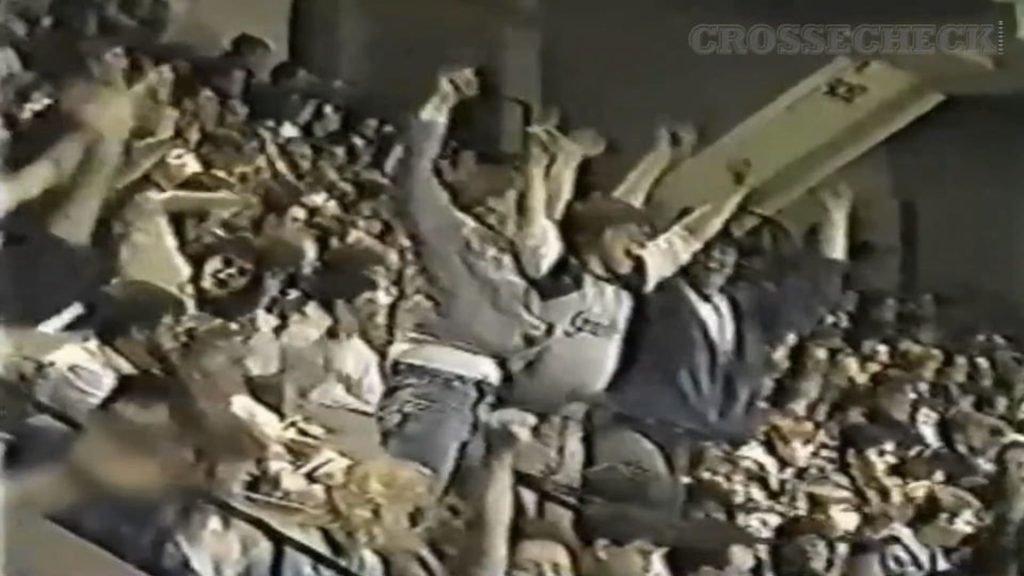
Indeed the league’s television advertisements promote the game’s toughness. Showing bone-shattering hits and proclaiming “it makes Sunday football look like a Cabbage Patch picnic,’’ the league seemed determined to deliver just that to the first-time patrons.
“I don’t want to be known as a rough guy,” said Rocco Guglielmo, No. 17 for the Saints, who rapidly became a crowd favorite because of his spirited play. “But that’s the way the game is played. Someone is going to do it to you, so you want to be the one doing the pushing.
“The crowd was great,’’ added Guglielmo. “They liked the action, but I think they also appreciated the game of lacrosse. Kevin Cook and Greg Tarbell each scored twice for the Saints, who led throughout. The Wings were kept at bay by goalies Bill Beroza (also the team’s general manager) and Vinnie Pfeifer. They combined for 22 saves.
The New Jersey Sports and Exposition Authority admits to being caught off guard} by the large turnout.
“I’m overwhelmed,” said Meadowlands spokesman Les Unger. “We had almost 3,500 sold at the gate. More than half bought tickets tonight.”
The ticket office lobby was nearly gridlocked just before gametime, ’ delaying the game 10 minutes to allow more time for people to reach the seating area. Also, fans found long lines at the refreshment stands, because few were open. Understandably, it would be unfeasible to fully staff the refreshment stands for an expected crowd of under 3,000.
“I can promise that the fans who have been standing in line to buy sodas will have a better experience next time,” said Unger. “I would say this was a profitable night. To average 5,000 per game for a first venture would be satisfactory.
Unger expressed concern that a significant portion of the young crowd would be heading back to out-of-state colleges before next Sunday’s home game against Washington at 1:30 p.m.
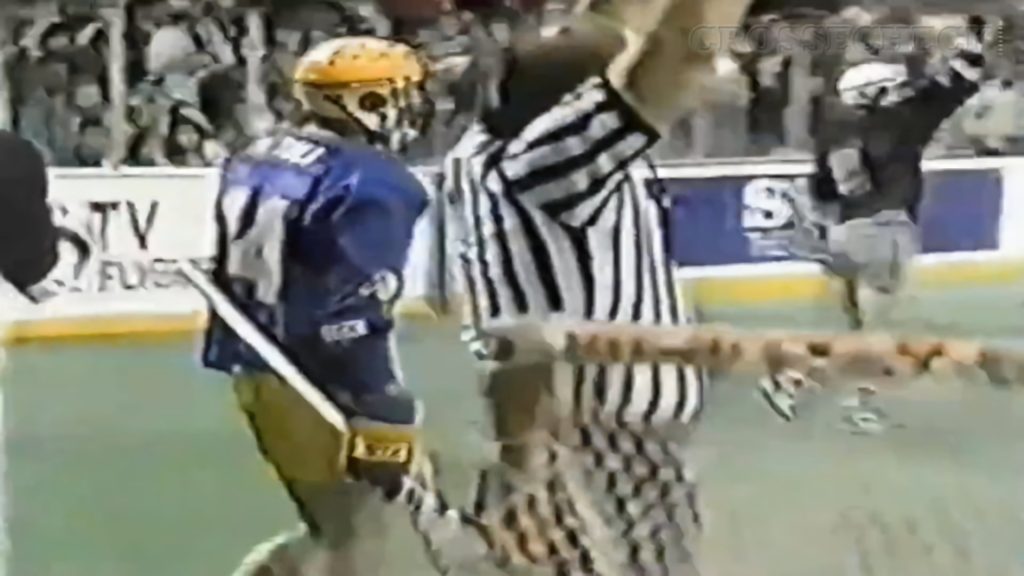
Otherwise, the turnout for a late start on a stormy night on a Giants football weekend can be nothing but encouraging. In addition, casual sports fans also had the opportunity to attend a New Jersey Devils hockey game that afternoon and a New York Knicks basketball game that night.
The league’s appeal also was evident in Landover, Md., where more than 7.000 at the Capital Centre saw the Washington Wave beat the Baltimore Thunder, 16-13.
The league is unique in that there are no franchises. Russ Cline and Chris Fritz of Kansas City own all four teams and chose coaches and general managers for each. The players were distibuted in draft-like fashion, with emphasis on regionalization.
Two Saints players are from New Jersey, while the rest live in Long Island.
“Were a very simple league that could become more complicated,” said Cline. “Eventually, we intend to have a draft and franchises, but there was no product to franchise right away.
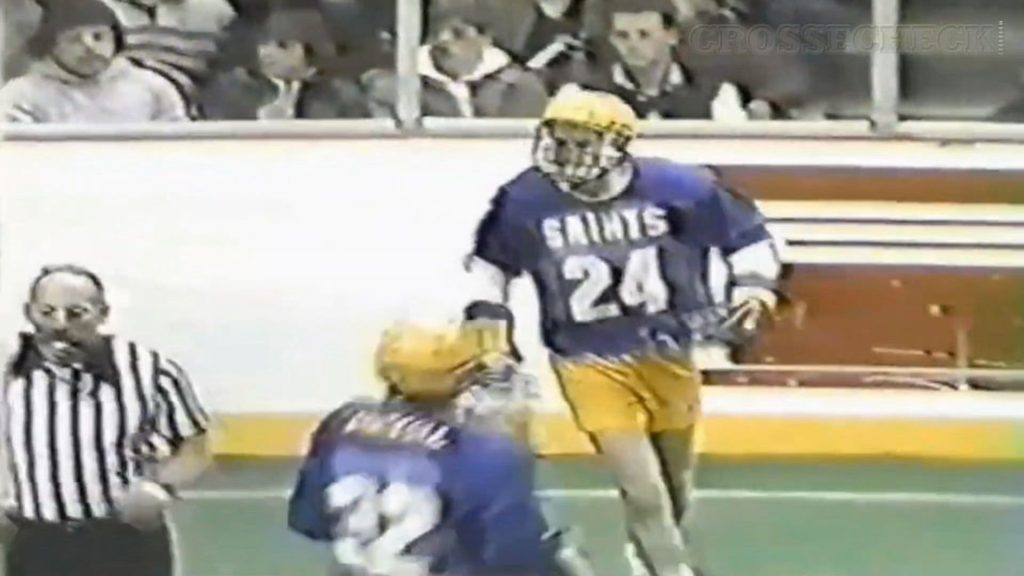
“Initially, we wanted-to have competitive teams in all four cities. Most people we’ve talked to feel this is an intelligent way to start a new league.”
The beginnings are modest enough. Three home games for each team, with three playoff semifinals and a championship game. The labor is cheap as players earn $100 per game. But in the words of Saints player Jeff Goldberg, “I’d play for free. Lacrosse players are obsessed with the game.”
Tickets, priced at $10 and $13 are not cheap. The price structure. Cline said, was determined by extensive market research. “We re not a $5 attraction.” he said.
Early indications suggest a fan obsession with the new sport, as all fan comments were positive.
Although minor in scope, several things were distressing. The public address announcer was annoying with his constant play-by-play chatter. His reminders of certain rules and identification of players were helpful, but his many references to “your New Jersey Saints” seemed insulting.
During one Saints penalty, the announcer proclaimed “Come on, your New Jersey Saints need your support. They’re a man down.”
For some reason, rhythmic musk was played each time the Saints had the ball and turned off whenever Philadelphia gained possession. It was unprofessional and homerisk and it took away from an otherwise professional first presentation of what could become America’s next major spectator sport.





